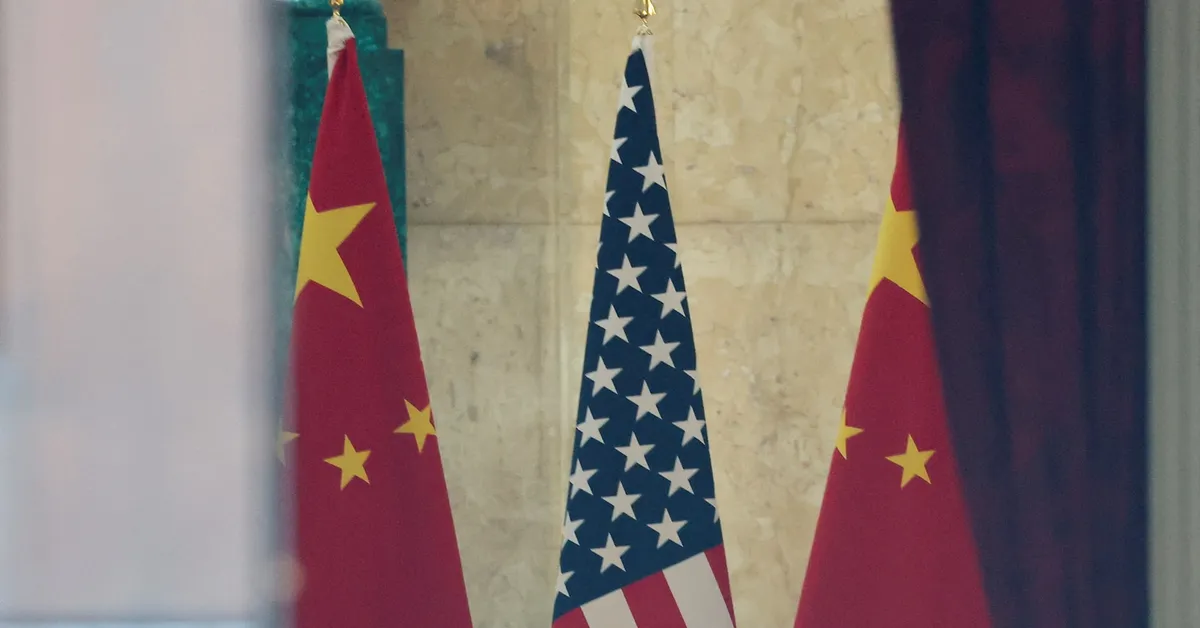
On June 11, stock markets and the dollar reacted with a cautious optimism to the latest developments in the ongoing U.S.-China trade talks. Investors are eagerly waiting for more comprehensive details regarding the agreements reached and whether these agreements will hold in the long term. Concurrently, bond investors are bracing themselves for a crucial reading on U.S. inflation, which could reveal the early effects of tariffs on consumer prices.
In London, representatives from Washington and Beijing announced that they had established a framework for trade discussions, which is expected to be presented to their respective leaders. U.S. Commerce Secretary Howard Lutnick indicated that this implementation plan aims to address restrictions on rare earths and magnets, though he did not provide any specific details. Despite the lack of concrete information, currency strategist Carol Kong from the Commonwealth Bank of Australia remarked, "As long as the two sides are talking, I think markets will be happy." However, she also cautioned that reaching a comprehensive trade agreement would be a challenging and lengthy process.
While the trade talks have brought some positivity, investor sentiment remains cautious. The S&P 500 futures and Nasdaq futures both saw a decline of 0.3%. European markets reflected a similar restraint, with EUROSTOXX 50 futures easing by 0.4%, FTSE futures dipping 0.2%, and DAX futures falling by 0.6%. This cautious approach stems from the market's history of being adversely affected by trade uncertainties.
Adding to the complexity, a federal appeals court recently allowed President Donald Trump's most extensive tariffs to remain in place while it reviews a lower court's decision that had sought to block them. This legal backdrop has further contributed to the unease among investors who have experienced volatility due to trade tensions in the past.
The currency markets also reflected a muted response, with the dollar holding steady against the Japanese yen at 144.97. The euro experienced a slight decline of 0.1%, settling at $1.1417, which nudged the dollar index up to 99.115. In the bond market, the yields on 10-year Treasuries remained relatively unchanged at 4.476%. Investors are keenly anticipating an auction of $39 billion in 10-year notes later in the day, with particular interest in whether foreign buyers will participate.
The backdrop of significant U.S. budget deficits and concerns regarding the White House's inconsistent trade policies have led investors to demand a higher term premium for holding Treasuries. Furthermore, upcoming data on U.S. consumer prices for May is expected to show initial upward pressure due to tariffs, although analysts believe it will take time for these effects to fully manifest in the data series.
Median forecasts predict that the headline Consumer Price Index (CPI) will rise by 0.2%, with core inflation increasing by 0.3%. These changes could push the annual inflation rates to approximately 2.5% and 2.9%, respectively. Any results exceeding these expectations could hinder hopes for further rate cuts from the Federal Reserve, potentially resulting in a sell-off in bonds. Currently, markets indicate little chance of a rate adjustment during the Fed's upcoming meetings, but there is about a 60% likelihood of a move in September.
In the commodity markets, gold prices saw a modest increase of 0.6%, reaching $3,341 per ounce. Meanwhile, oil prices have slightly retreated from near seven-week highs as the market awaits U.S. inventory data. Brent crude has dropped by 10 cents to $66.77 per barrel, while U.S. crude has eased by 4 cents to $64.94.
As trade negotiations continue and economic indicators are released, market participants remain vigilant, aware that the implications of these developments will shape financial landscapes in the near future.